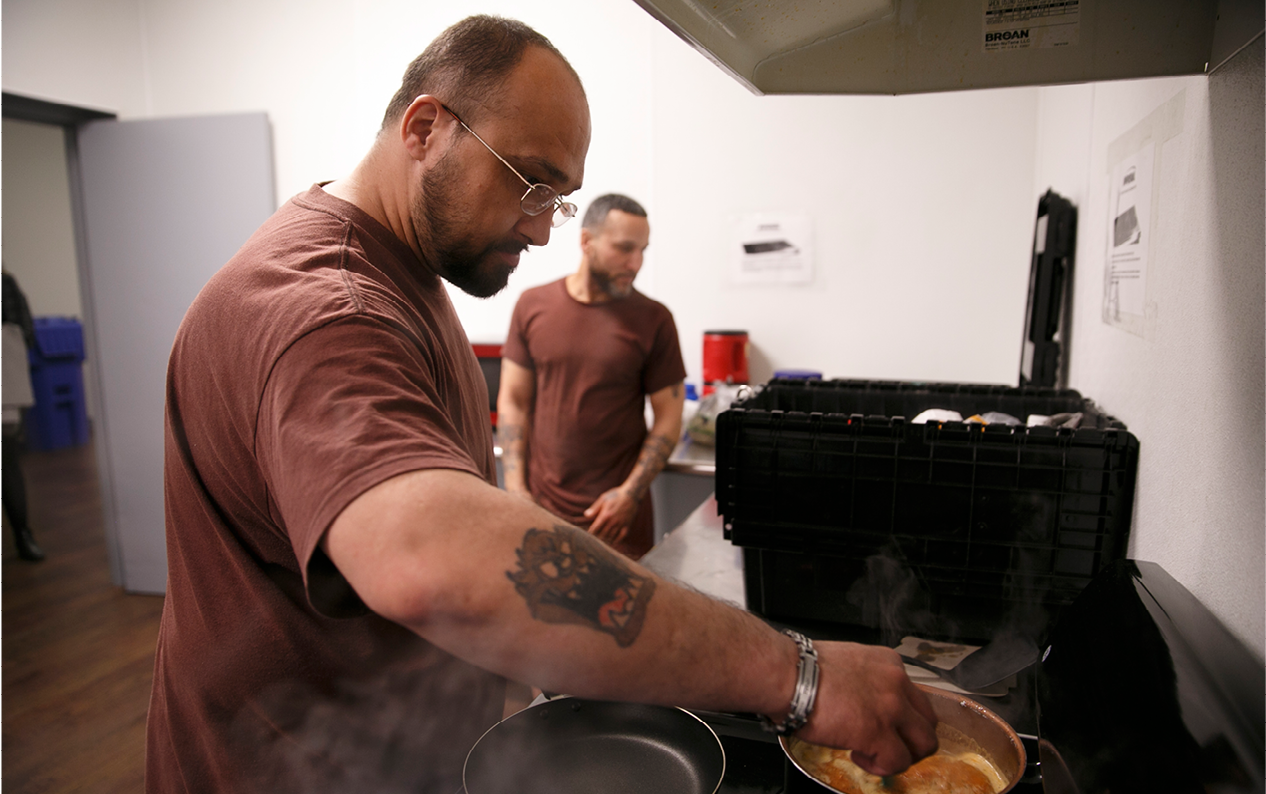Reentry for former inmates means much more than just being released from prison. It means finding a stable living environment, mending broken ties with family and friends, and finding a career to support and sustain a successful life outside of prison. As the number of unemployed former inmates rises to nearly 5 million in the United States, effective workforce development is crucial to the advancement and growth of our society.
Responsible for operating the state’s prison system and providing parole supervision to reentrants, the Pennsylvania Department of Corrections (DOC) seeks to give people second chances. Their mission statement “to reduce criminal behavior by providing individualized treatment and education to inmates, resulting in successful community reintegration through accountability and positive change,” is supported through state-run programs, such as treatment services; education and vocational training; mental health management; and reentry support.

According to the Prison Policy Initiative, unemployment is highest within the first two years of release, so a personalized plan of action is critical to a reentrant’s success. The DOC provides support and opportunities focused on an individual’s needs knowing that the right fit will sustain employment. Before being paroled or released, inmates receive 160 hours of reentry training. This training is helpful as it provides the basic necessities to kick-start their reintegration. During this training they get help with things, like resume preparation, identification document retrieval, mentoring services, and finding where their interests lie. If these specific needs are not met at that personal level, chances of recidivism, going back to jail,
are high.
There are several other reentry services available to inmates who qualify, such as medical assistance enrollment, substance abuse treatment, GED testing, and vocational trade certification courses. Furthermore, once released, the assistance continues.
Some reentrants may struggle finding stable housing after their release. “Things change at home, and in some cases, individuals have burned their bridges,” says George Little, executive deputy secretary for the Pennsylvania Department of Corrections. “We find that we get the best outcomes if we can get somebody back into a stable home, positively situated in the community.”

For those that don’t have a stable home environment to return to, the journey of reentry begins at one of the 35 available reentrant sites—12 community correction centers (CCCs) and 23 community corrections facilities (CCFs), which are contracted facilities not operated by the DOC, throughout the Commonwealth. The continuity of the services continued at these facilities can make the transition back into the community smoother for the reentrant.
Proper workforce development training can have a major impact on the pace of performance. When people find a job within the first three months of their release, the likelihood of them returning to prison is significantly lower. At facilities like the Harrisburg Community Corrections Center, one of the 12 CCCs in Pennsylvania, they can focus on finding a career, treating a drug addiction, or facing any other obstacles standing between them and success.
CHALLENGES
Even with all the assistance, former inmates can still fall victim to bad habits, like returning to drug use or even selling drugs as a source of income. As the United States faces the opioid epidemic, it is crucial for reentrants to have consistent support and mentorship during their reentry. This is one of the more challenging hurdles when trying to reduce the recidivism rate.
Another challenge that the Department faces is how to search for job opportunities that are a good fit for the reentrant’s needs and interests. Communication about jobs is evolving faster every day and those inside and newly out of prison struggle to keep pace with it. Reentrants often struggle with knowing which sources to trust and how to understand job roles and career opportunities. The challenge lies with an employer and a reentrant finding each other and clearly understanding one another’s needs and expectations.
FUTURE STATE
There are ways companies can create sustainable job opportunities for those returning to the workforce. Seeing past the stereotypes to understand what someone can offer will ultimately work in both the reentrant’s and company’s favor. Taking the time to look at someone’s skill set, interests, and past work history, both outside and inside prison, will help companies create sustainable career opportunities.
Most reentrants make rational choices based on their life experience. However, that life experience may be very different from those already in the workforce. In that gap lies challenges for communication, creating appropriate job requirements, and providing an appropriate balance of support and accountability.
An important way to bridge the employer gap is with a reentrant’s parole agent. Parole agents take on many roles from transitioning back into society to helping parolees stay out of prison. The parole agent can take the place of a coach, cross-cultural interpreter, and social worker. The parole agent can help smooth over wrinkles for newly hired reentrants and help the employer’s succeed in building a sustainable workforce—one person at a time.
At the end of the day, partnerships between companies and reentry programs make sense. The only way it works for both the reentrant and employer is for the relationship to make business sense because that is the only way this kind of workforce development is sustainable long-term. There is a tremendous labor resource that is being overlooked among the formerly incarcerated. While states work to make their communities safer, workforce development will continue to stand out as one of the many ways companies can keep our communities moving.




